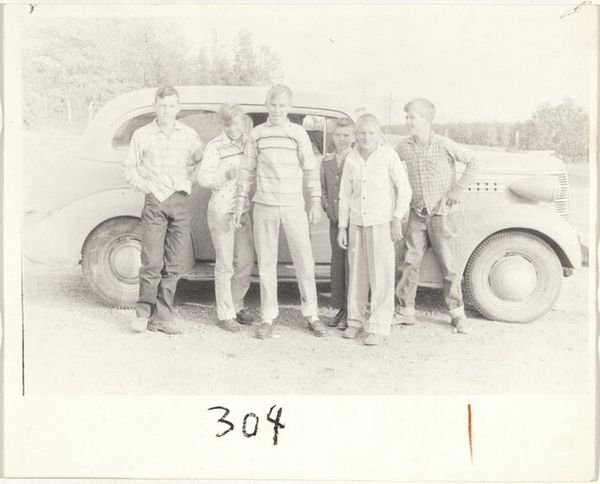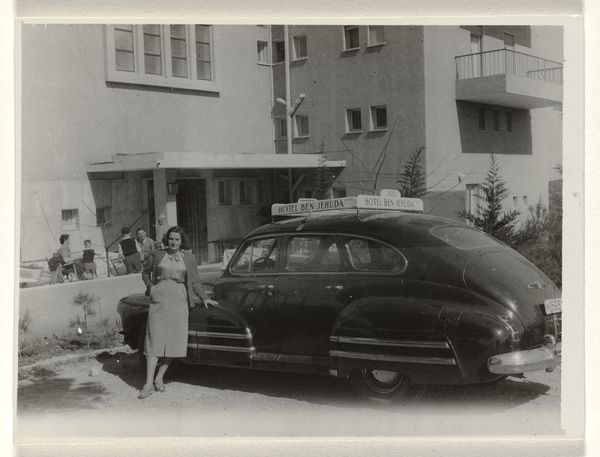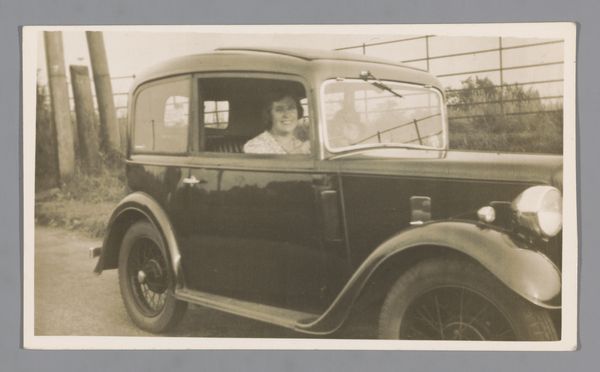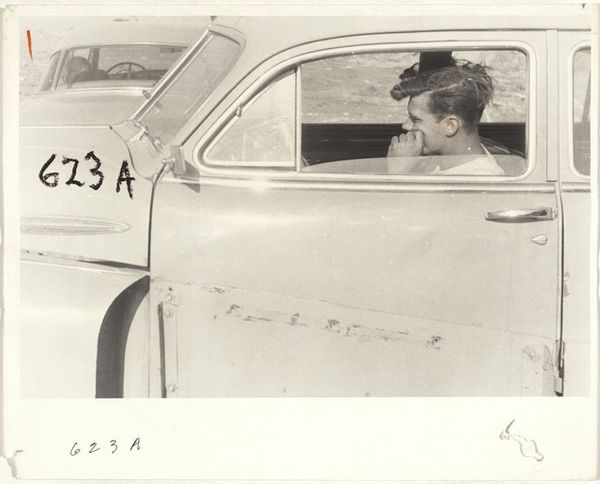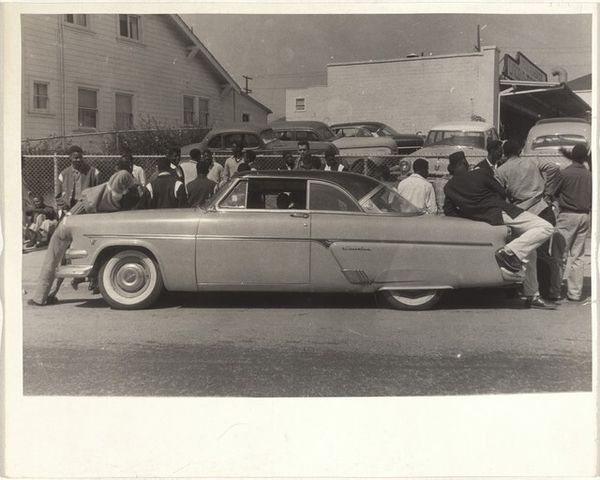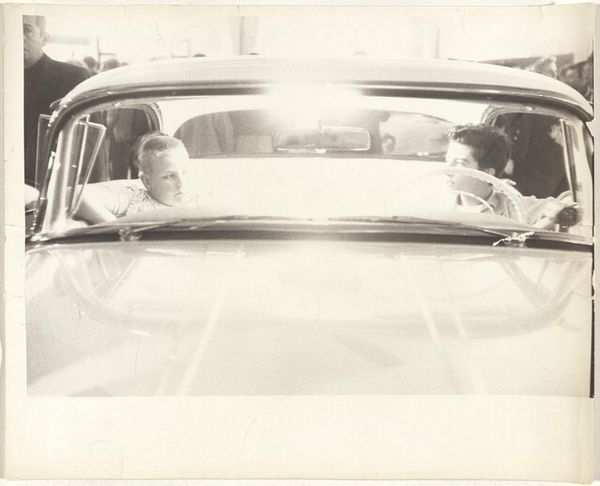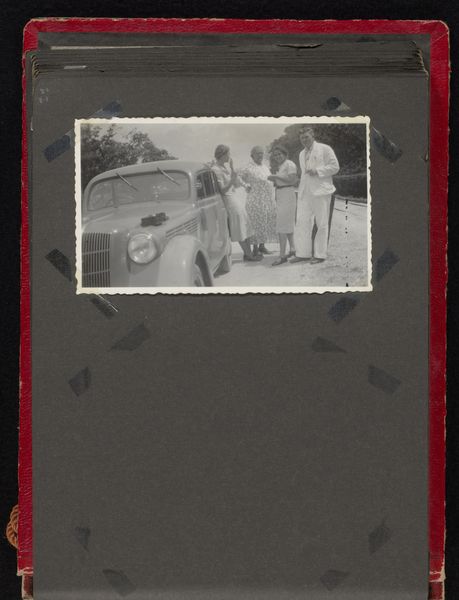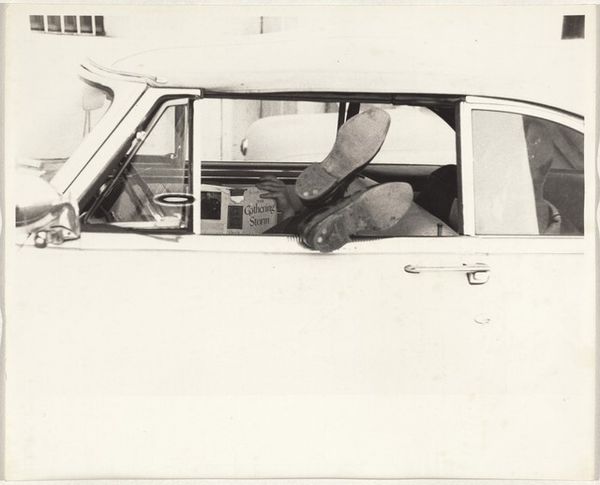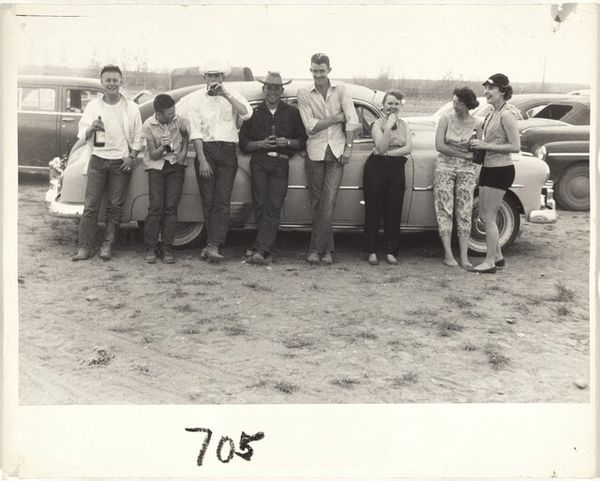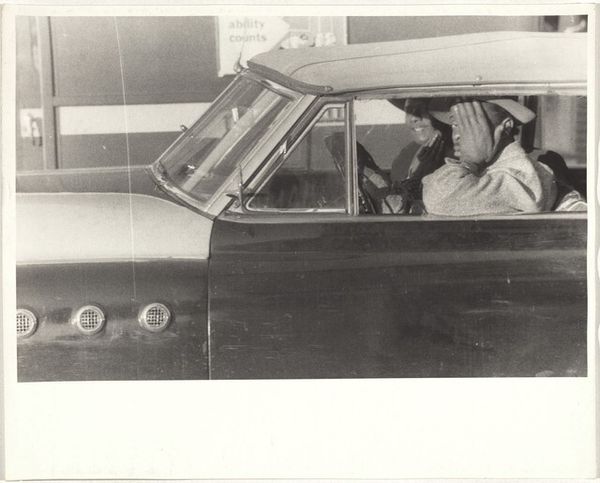
Dimensions: sheet: 20.2 x 25.3 cm (7 15/16 x 9 15/16 in.)
Copyright: National Gallery of Art: CC0 1.0
Curator: Robert Frank's gelatin silver print, "Fourth of July—Jay, New York" from 1956, captures what appears to be a family roadside scene. It’s a candid slice of Americana. Editor: Immediately, I'm struck by the stark contrast of the gleaming dark car against the sunlit figures and house in the background. It feels like a moment caught between motion and stillness, a tension of potential stories within a frame. Curator: Precisely! The placement of the car acts as a critical barrier and focal point. Frank’s focus on postwar materiality reflects an era defined by mass production and the automobile's ascendance within American culture. Note the crisp details afforded by gelatin silver. Editor: It's almost like the car is a symbol in itself—an emblem of American prosperity and mobility. Yet the slightly melancholic expressions on their faces hint at something beyond pure celebration, perhaps a subtle critique embedded within this moment of observation? Curator: Indeed, while appearing traditional, the choice of this everyday setting presents an implicit comment on consumer culture through photographic methods accessible to everyday life, creating both a universal snapshot and commentary. Consider Frank’s artistic process in making something significant out of mundane, readily accessible, moments. Editor: The slightly blurred figures further reinforce that sense of fleetingness and truth. Looking at their garments and the general composition, I think of that house with its porch also acting as a witness; one even featuring what I believe is an American flag draped across the porch. What does that symbolize within Frank's rendering, I wonder? Curator: The accessible photographic technology allows an unvarnished portrayal of American life. The car’s surface invites closer inspection as a manufactured object bearing imperfections which reflect social realities during post-war America. Editor: Yes, through symbols so ordinary and pervasive—the car, the house, the flag—Frank subtly exposes layers of emotion and shared cultural meaning that can stir our subconscious understanding of both freedom and confinement, family life and individual expectation. I find it compelling to uncover layers beneath what initially seemed ordinary. Curator: Ultimately, examining "Fourth of July—Jay, New York," in terms of process and availability gives us not only visual art but evidence that contributes valuable insights into an era framed through individual expression and materiality.
Comments
No comments
Be the first to comment and join the conversation on the ultimate creative platform.
